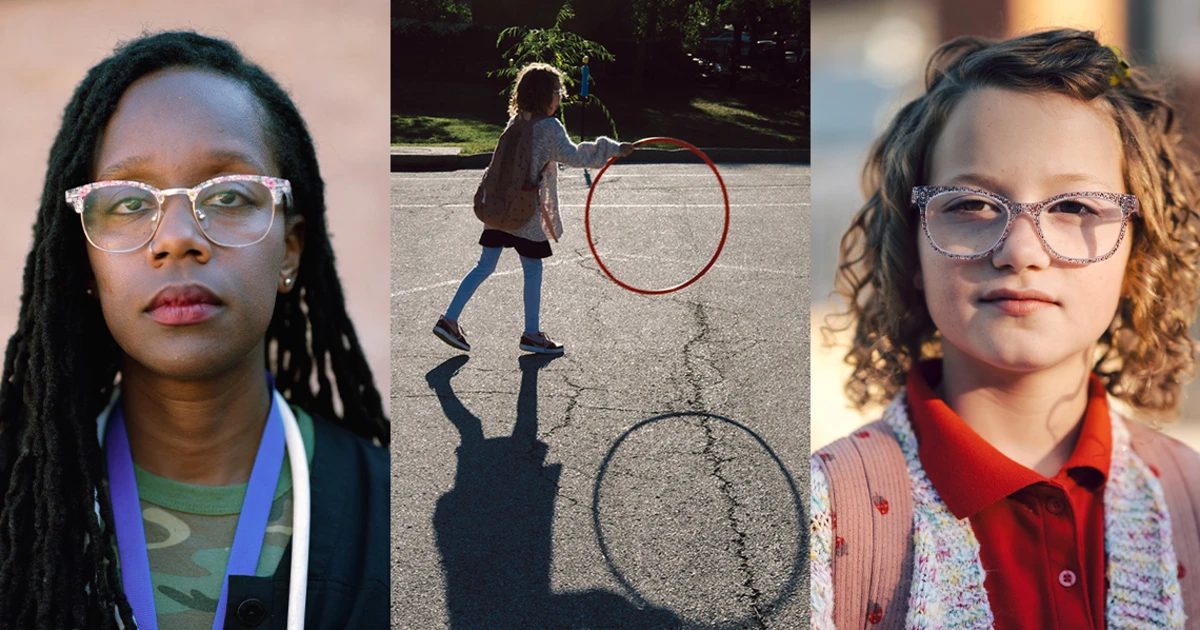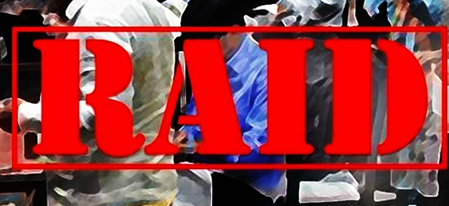
This is Part 1 of The Vaccine Divide, a data investigation into how an escalating movement against immunization is challenging public education, widening health disparities and threatening the health of America’s children.
ST. LOUIS — For more than a half-century, vaccines have had remarkable success eradicating the most lethal and devastating childhood infectious diseases, saving millions of lives and ushering in a relative golden era of global public health.
But now, America is dangerously backsliding.
The vast majority of counties across the United States are experiencing declining rates of childhood vaccination and have been for years, according to an NBC News data investigation, the most comprehensive analysis of vaccinations and school exemptions to date.
This six-month investigation, done in collaboration with Stanford University, gathered massive amounts of data from state governments and archives of public records reaching back years or decades. The data focused on core childhood vaccines that, together, regard someone to be “up to date” on immunizations; these are the measles, mumps, rubella, polio, whooping cough and diphtheria shots.
With the help of infectious disease researchers at Stanford, NBC News filed scores of requests for documents, including materials obtained under the Freedom of Information Act, and wrestled different types of data into a standardized format to map and compare rates across thousands of counties.
One key finding of the analysis is stunning: A large swath of the U.S. currently does not have the basic, ground-level immunity medical experts say is necessary to stop the spread of measles, which had once nearly been eliminated. The data further reveals that:
Since 2019, 77% of counties and jurisdictions in the U.S. have reported notable declines in childhood vaccination rates. The declines span from less than 1 percentage point to more than 40 percentage points.
Vaccine exemptions for school children are rising nationwide: As many as 53% of counties and jurisdictions saw exemption rates more than double from their first year of collecting data to the most recent.
Among the states collecting data for the measles-mumps-rubella (MMR) vaccine, 68% of counties and jurisdictions now have immunization rates below 95% — the level of herd immunity doctors say is needed to protect against an outbreak.
“As childhood vaccination rates fall, we’ll see more diseases like measles,” Dr. Sean O’Leary, an infectious diseases expert with the American Academy of Pediatrics, said about the findings. “And we’ll see more children die — tragically — from diseases that are essentially entirely preventable.”
St. Louis offers a window into the striking findings.
The city known as the “Gateway to the West” — home to some of the country’s most influential vaccine research and development institutes, including the Washington University School of Medicine — may be quickly losing its ability to prevent infectious diseases.
The rate of children starting kindergarten in St. Louis with all the state-required vaccines has plummeted from 91.6% during the 2010-2011 school year to 75.9% in 2024-2025.
And the number of families seeking an exemption for their children rose from 0.3% in 2010 to 3.4% last school year, according to the NBC News investigation. In Missouri, exemptions can be granted either for medical or religious reasons.
In 2010, almost 90% of kindergartners attending school within the St. Louis city limits had received their recommended MMR shots, which prevent nearly all cases of measles — the most contagious virus known in the world. In the last school year, MMR coverage rates among kindergartners plummeted to 74%.
That’s below even Gaines County, Texas, the epicenter of the 2025 measles outbreak, where 77% of kids were vaccinated last school year. That puts St. Louis at a high risk for a surge of the virus, which tore through largely unvaccinated communities in West Texas. The outbreak killed three people, including two young girls.
“That’s a heavy, heavy fact,” said Virginia Wilson, head nurse at the Premier Charter School in St. Louis, which has 1,058 students from pre-K through middle school. “We’re just in a waiting phase before measles comes and rocks the state of Missouri.”
The story of St. Louis is emblematic of the nation’s immunization declines. A combination of rising exemptions, difficulties accessing health care services, and anti-vaccine messages fueled by social media and, more recently, the federal government, has laid a path for preventable diseases to potentially explode in the U.S.
The nurse’s station
Children who go to Wilson at Premier Charter find themselves entering a bright, welcoming little clinic, with string lights and posters on the wall that encourage positivity. On a recent Tuesday, one little girl needed a scrape on her knee cleaned and bandaged. Another child said her tummy hurt.
“I love what I do. This is what I will do forever,” Wilson, who has been a nurse for 15 years, said as she treated both the girls.
Beyond treating the daily bumps and bruises, she starts the school year with a new and urgent mission.
Since classes began on Aug. 20, Wilson has been wholly dedicated to getting her students up to date on their vaccines. She pores over each child’s vaccination record, and contacts the families if additional shots are needed to meet the state’s requirements.
The outreach isn’t a confrontation or demand. Wilson calls it a conversation, a chance to find out why children are behind on their shots and to offer resources, if needed.
“Maybe they don’t have the funds or cannot get there, can’t get off of work,” she said. “We can maybe work with a local clinic that can come and do a clinic here at our school. Or they can go to a community clinic, and we can make sure that they get there.”
This academic year, about 20% of incoming kindergartners haven’t received all of their required shots against contagious diseases such as polio, mumps, hepatitis B or whooping cough.
Those children either need to get vaccinated or have a medical or religious exemption by Oct. 6 — or else they can no longer attend classes. It’s a state law. “We have to have families stay off of campus until they’re compliant,” Wilson said.
Her efforts are likely to pay off. If this school year turns out like the previous one, Wilson’s enforcement means Premier Charter will reach 97% of kindergartners fully vaccinated by mid-fall, high enough for herd immunity.
“Amazing how fast parents get doctor’s appointments when their kids can’t come to school,” said Amber Boleyjack, director of nursing at Saint Louis Public Schools. “If you’re not compliant with your immunizations, you should not be enrolled in school.”
Student enrollment in Saint Louis Public Schools has been declining as a growing number of people are moving out of the city or choosing to send their children to charter schools.
That puts tremendous financial strain on the school system. Average daily attendance primarily determines school funding, according to the Missouri Department of Elementary and Secondary Education. And the board of education is considering a proposal to close half of its schools for the 2026-2027 school year.
Boleyjack blames steep budget cuts for lax vaccination enforcement. She said that some administrators allow noncompliant children to stay in school to keep enrollment up to be eligible for tax money.
“They got to get their dollars. So they’re going to let in students who may not be completely compliant,” she said. “I don’t agree with it, but that’s what it is.”
It’s a claim that Saint Louis Public Schools has denied. “That is an inaccurate and irresponsible allegation,” a spokesman for the school system wrote in a statement to NBC News. “Saint Louis Public Schools follows state law and our own policies regarding student immunization, which are designed to protect the health of all students.”
Still, the statement acknowledged that “the data points to a significant number of students who are simply out of compliance, rather than having a formal exemption.”
“This is an issue we are actively working to address,” the spokesman wrote. “Many of our families face challenges such as limited access to transportation, a lack of paid time off from work for appointments, or difficulty navigating the healthcare system.”
The spokesman said the school system is providing support for students with medical needs and is partnering with community organizations to offer school-based and mobile clinics “to make it easier for our families to access these vital services.”
The challenge of getting to the doctor
There’s a range of vaccination coverage across the St. Louis area, which includes both an independent city and a county.
St. Louis County — a mostly white, wealthier area — has had a relatively modest dip in MMR rates since 2010: from 96% to 91%.
The most significant gaps occur in St. Louis City, a lower-income, diverse area with a large immigrant population. About 20% of the city’s population lives below the poverty line, compared with 12% overall in the state, according to Census Bureau data. Less than half have a college degree.
At Affinia Healthcare, a federally qualified health center in St. Louis City, the back-to-school crush for checkups was stronger than ever this year. However, the number of vaccines given has dropped nearly 7% since 2023.
Dr. Thomas McKinney, a pediatrician at the center, blames it in part on growing vaccine hesitancy.
“It makes me sad,” he said, “the vaccines that we’re giving have been such an important tool in preventing so much illness in kids and just the community as a whole.”
His clinic cares for mostly underserved families. The majority are on Medicaid.
Part of the challenge is just getting to the doctor. “It can be difficult, especially if you don’t have a primary care physician,” McKinney said. “It takes time for parents to take off work, set up appointments, to come in for vaccines.”
This is very familiar for Diamond Lewis. She remembers a bitterly cold morning in February 2020, when she bundled up her baby, Kyrii, in a fuzzy teddy bear onesie before heading to his 4-month checkup, when infants typically get a round of critical immunizations, at an Affinia Healthcare location.
Lewis stepped outside, the freezing wind slapping her in the face, and started walking. She had no car, no one to drive her and no money for a taxi or an Uber.
It was a 10-minute walk to the bus. Then they transferred to a train. Then they caught a second bus to get them to within a 5-minute walk to the clinic. It was a two-hour journey.
“It was a lot,” Lewis, now 26, said. “There were a lot of emotions. I was just like, ‘I don’t know if I can do this.’”
When they arrived, Lewis learned there’d been a mix-up with Kyrii’s appointment. They’d have to come back another time.
It’s a daunting situation for any parent, especially one who can’t afford to take time away from work.
“Not a lot of jobs offer sick leave or let you make up the day,” Lewis said. “It’s a constant pick-and-choose.”
Kyrii is now 5 years old and just started kindergarten. Because of his mother’s determination, he’s all caught up on his immunizations.
Making it easier to opt out
The vast majority of parents in the U.S. do vaccinate their children with at least some of the recommended shots. Approximately 92% of kids are protected against infectious diseases such as measles, whooping cough and diphtheria, according to the latest data from the Centers for Disease Control and Prevention.
And a recent NBC News poll found that 78% of surveyed U.S. adults “somewhat” or “strongly” support vaccines in general.
An escalating movement to undermine faith in immunizations is increasingly taking hold in communities and cities, most recently fueled by aggressive actions by Health and Human Services Secretary Robert F. Kennedy Jr., to weaken vaccination requirements for schoolchildren and make it easier for parents to opt out of them.
Some children have compromised immune systems or illnesses that prevent them from getting vaccines. Increasingly, however, families are citing “religious” or “personal” reasons for forgoing vaccination.
That kind of excuse has been repeatedly encouraged by Kennedy, who says vaccination is a “personal choice.”
HHS has notified schools and clinics that receive federal money from the Vaccines for Children Program, which provides free shots for uninsured or underinsured kids, that they would be required to recognize any “religious and conscience-based exemptions to vaccine mandates.”
Bill Winfrey, vice president of policy and strategic initiatives at Saint Louis Integrated Health Network — a nonprofit that works to tackle health disparities — believes doubts about vaccine safety sown by the “most trusted health officials in the country” are partly to blame.
“In a situation of doubt, it’s just easier to be inactive. It’s easier to say, ‘Well, if there’s any question, I’m just not going to do it,’” he said.
For most of the nearly 20% of kindergartners who haven’t had their full schedule of shots, their families have never requested an exemption; the children are simply inadequately immunized.
‘Measles can be deadly’
Kimberly Jones, a mother of five living in a vibrant, diverse area south of St. Louis’ downtown area, was careful to make sure her four older children were fully vaccinated. Any shot their pediatrician recommended, she had the children get them on schedule. They were all healthy.
Her view on vaccines, however, changed when her youngest child, 4-year-old Za’riyah, stopped meeting typical developmental milestones around the time the little girl got her first MMR shot in 2023.
Za’riyah’s since been diagnosed with autism. Though there’s no scientific evidence linking the MMR vaccine to disorders like autism, Jones, 44, said the dramatic increase in autism spectrum disorder diagnoses over the past two decades makes her question whether the shots have changed somehow.
“I no longer trust any vaccines, old or new,” Jones said.
Boleyjack of Saint Louis Public Schools said more parents have shared their worries about autism and vaccines in recent years.
“I usually just use my own personal story to say, ‘You know what? I have a child with autism. I strongly do not believe that his autism was caused from immunization,’” she said. “There’s no research to back it up.”
Some have changed their minds. Others haven’t. “And that’s fine,” she said. “I just want them to have accurate information.”
Boleyjack’s goal for the coming school year is to hit an 80% vaccination rate within the public schools — still far below herd immunity, but an improvement — by educating parents and increasing school-based access to vaccines and general health care.
“Measles can be deadly,” she said. “That’s what’s scary about it.”
‘Do you have a gun in your home?’
For St. Louis parents Emily Pratt, 39, and her husband, Ryan Pratt, 41, the declining vaccination rates are a cause for alarm.
Their young daughter, Lucy, has a rare autoimmune disease called juvenile dermatomyositis, or JDM, that leaves her almost defenseless against even minor illnesses. She’s on medication to suppress her overactive immune system from attacking her body.
That means Lucy has little to no ability to fight off even a common cold.
“We have four kids. If one of them brings a cold home, they’re better in three days,” Emily Pratt said. But Lucy “has a cold for two weeks. She gets sicker than typical kids.”



